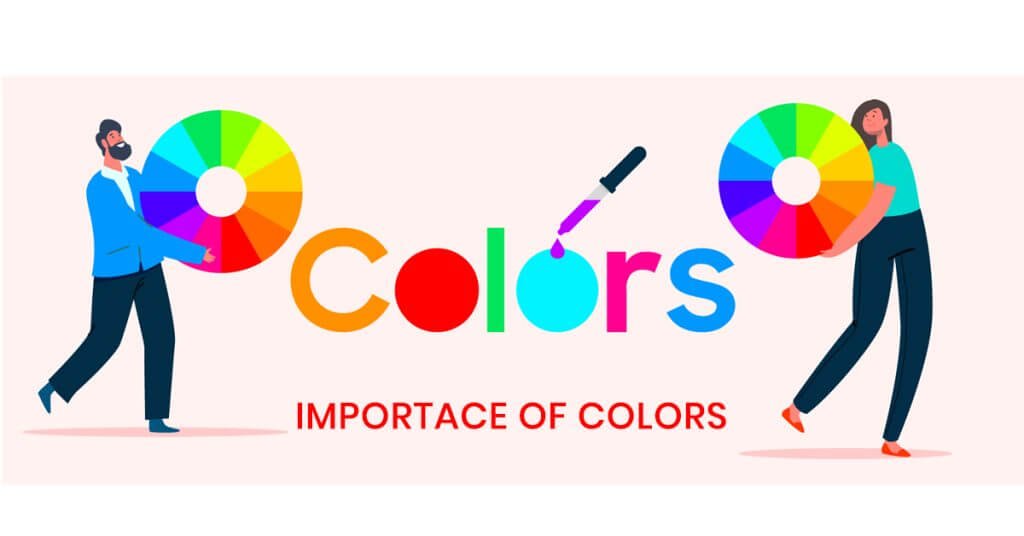In today’s competitive business landscape, establishing a strong and memorable brand is essential for success. While many factors go into creating a brand’s identity, the power of color is one that is frequently disregarded.
The appropriate colors can significantly affect how your target market perceives your brand. This article will examine how colors can influence how people perceive your brand and offer helpful tips for choosing the ideal colors to strengthen your brand identification.
Color psychology plays a significant role in how individuals perceive and interact with brands. Different
evoke specific emotions and associations, making it crucial to choose wisely when developing your brand’s color palette. Let’s delve into the ways in which colors can shape your brand’s perception
Establishing Brand Personality with Colors:
Colors have the ability to convey different personality traits. For example, bold and vibrant colors like red and orange can represent energy and excitement, while pastel shades create a sense of calm and serenity. By strategically selecting colors that align with your brand’s values and personality, you can create a cohesive and engaging brand image.

Evoking Emotional Responses:
Colors have a direct impact on human emotions and can evoke specific feelings. Warm colors like yellow and red tend to create a sense of urgency or excitement, while cool colors like blue and green evoke feelings of trust and tranquility. Understanding the emotional responses associated with different colors enables you to elicit the desired emotions from your target audience.
Enhancing Brand Recognition:
Consistency in color usage is crucial for brand recognition. By consistently incorporating specific colors across various touchpoints such as your logo, website, packaging, and marketing materials, you reinforce your brand identity in the minds of consumers. This recognition builds trust and establishes a strong connection between your brand and its values.
Targeting Specific Audiences:
Different colors resonate with different demographic groups. For instance, bright and vibrant colors are often preferred by younger audiences, while more subdued and sophisticated colors appeal to older demographics. Understanding your target audience and their color preferences allows you to tailor your brand’s colors to effectively connect and engage with them.
Communicating Brand Values:
Colors can communicate subtle messages about your brand’s values and positioning. For instance, eco-friendly brands often utilize shades of green to convey their commitment to sustainability. By aligning your color choices with your brand’s values, you create an immediate visual association that reinforces your brand’s messaging.
Now that we’ve explored the ways in which colors can shape your brand’s perception, let’s dive into some practical tips for selecting the right colors for your brand:
Research Your Target Audience:
Gain a deep understanding of your target audience’s preferences, cultural backgrounds, and psychological associations with colors. This research will provide valuable insights into which colors are most likely to resonate with your audience.
Consider Your Industry and Competition:
Analyze the colors commonly used within your industry to identify opportunities for differentiation. By choosing colors that stand out from your competitors while still maintaining relevance within your industry, you can create a unique and memorable brand identity.
Reflect on Your Brand’s Personality:
Define your brand’s personality traits and values. Are you aiming for a playful and energetic brand or a more sophisticated and luxurious image? Consider how different colors align with these characteristics and select colors that best represent your brand’s identity.
Test and Iterate:
Don’t be afraid to experiment and test different color combinations before finalizing your brand’s color palette. Gather feedback from your target audience and make adjustments as necessary. A well-informed and data-driven approach will help you refine your color choices.
Seek Professional Assistance:
If you’re unsure about color selection or want to ensure a cohesive and impactful brand identity, consider consulting with a professional graphic designer or branding expert. Their expertise and experience can provide valuable guidance throughout the color selection process.

Remember Selecting the right colors for your brand is a crucial step in shaping its perception. By understanding the psychology of colors and their impact on emotions and associations, you can create a brand identity that resonates with your target audience, communicates your values, and leaves a lasting impression. Embrace the power of colors and watch as they transform your brand’s perception and elevate its success in the market.
Frequently Asked Questions:
What are brand colors?
Brand colors are specific colors that a company or brand chooses to represent its identity. They are an essential part of visual branding and are used consistently across various brand assets such as logos, websites, packaging, and marketing materials.
What are good colors for a brand?
Good colors for a brand depend on various factors such as the industry, target audience, and brand personality. However, generally, good colors for a brand are those that align with the brand’s values, evoke the desired emotions, and differentiate it from competitors. It’s important to consider the psychological associations and cultural connotations of colors to make informed choices.
What is the popular brand color?
There isn’t a single popular brand color as it varies across different industries and brands. However, some commonly recognized brand colors include Coca-Cola’s red, Facebook’s blue, and Starbucks’ green. Popular brand colors are often associated with successful and well-established brands that have effectively utilized their chosen colors to create strong brand recognition.
What is the purpose of brand colors?
The purpose of brand colors is multi-fold. Firstly, they help establish brand recognition and differentiate a brand from its competitors. Consistent use of brand colors across all touchpoints creates a cohesive and memorable visual identity. Secondly, brand colors evoke specific emotions and associations, allowing brands to communicate their values, personality, and positioning. Lastly, brand colors contribute to building trust, enhancing brand recall, and influencing consumer perceptions, ultimately shaping the overall brand experience.
Related Articles:










